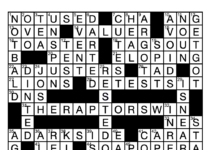The issue of widespread fake news is a growing problem now more than ever before. Researchers at the University of Waterloo teamed up with DarwinAI to develop Artificial Intelligence (AI) technology that could potentially put an end to the issue.
Researchers used a type of deep learning software known as a transformer – specifically the deep bi-directional transformer RoBERTa – to find relevant pieces of information within bytes of data.
“The beauty of bidirectional transformer language models is that they allow very large text corpuses to be used to obtain a rich, deep understanding of language,” Alex Wong, co-founder and chief scientist at DarwinAI, said. “This understanding can then be leveraged to facilitate better decision-making when it comes to the problem of stance detection.”
The AI software was able to detect the stance of an article by comparing its title with the information contained in its body.
Based on this comparison, it could compute if the claim made by the title agreed or disagreed with the information in the article, discussed the information without a stance, or was simply unrelated.
“What an AI system can do is provide some statistical assurance about the claims in a given news piece. That is, given a headline, they can surface that, for example, 5,000 ‘other’ articles disagree with the claim whereas only 50 support it. Such a distinction would serve a warning to the individual to doubt the veracity of what they are reading,” Wong explained.
However, researchers acknowledge that this AI model has its limitations, and should be used alongside other methods to fact-check articles.
“A potential unintended negative outcome of this work is for people to take the outputs of an automated fact-checking system as the definitive truth, without using their own judgment, or for malicious actors to selectively promote claims that may be misclassified by the model but adhere to their own agenda,” the researchers explained in their paper.
This research exemplifies the power of combining AI abilities with human expertise to solve a problem.
“In general, we combine the experience and creativity of human beings with the speed and meticulousness afforded by AI. To this end, AI efforts to combat fake news are simply tools that fact-check and journalists should use before they decide if a given article is fraudulent,” Wong said.
Moving forward, the team hopes to bring AI into real-world use and continue research on using AI to validate the truthfulness of articles.































